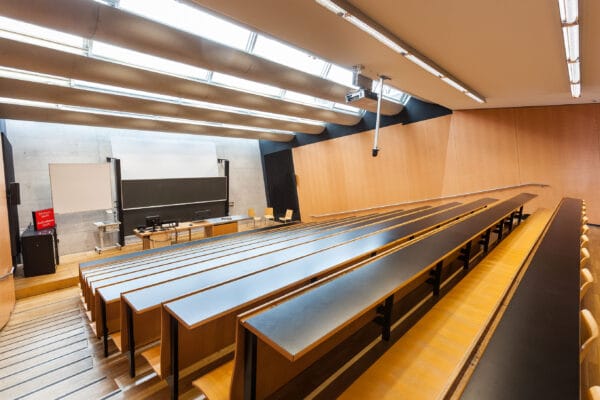
NAME:
SOWI - HS 3
BUILDING:
SOWI
FLOOR:
0
TYPE:
Lecture Hall
CAPACITY:
140
ACCESS:
Only Participants
EQUIPMENT:
Beamer, PC, WLAN (Eduroam), Overhead, Blackboard, Sound System, Microphones, Handicapped Accessible
Understanding soil respiration (SR) dynamics is essential for predicting climate change impacts on terrestrial carbon cycles. However, there is limited knowledge about how microbial community composition and metabolic state affect SR in mountainous areas, where environmental conditions are highly variable and warming occurs faster than in other regions. This study examines the relationship between SR and microbial (ITS- and 16S-based) gene copy numbers from intracellular DNA (iDNA) in alpine and subalpine grassland soils. By focusing on iDNA, we exclude non-organismic extracellular DNA and analyze DNA from intact cells, whether active or dormant. We calculate a gene-copy specific respiration rate (GSRR) and categorize microbial communities into different metabolic states. Our findings show a positive correlation between GSRR and Q10, with highly active microbial communities found at lower elevations with higher inclinations, more favorable pH, and C:N ratios. Additionally, greater soil fauna richness and diversity reduced microbial activity levels, while prokaryote richness and diversity were highest in the most active and most dormant communities. This study provides new insights into the relationships between microbial metabolic states and SR in alpine and subalpine grasslands, enhancing our understanding of these complex interactions and the effects of global warming on terrestrial carbon cycles.

We and use cookies and other tracking technologies to improve your experience on our website. We may store and/or access information on a device and process personal data, such as your IP address and browsing data, for personalised advertising and content, advertising and content measurement, audience research and services development. Additionally, we may utilize precise geolocation data and identification through device scanning.
Please note that your consent will be valid across all our subdomains. You can change or withdraw your consent at any time by clicking the “Consent Preferences” button at the bottom of your screen. We respect your choices and are committed to providing you with a transparent and secure browsing experience.